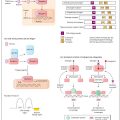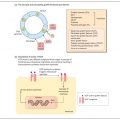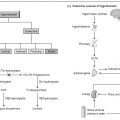The end of puberty in females is associated with the onset of regular ovulatory menstrual cycles. The menstrual cycle represents complex hormonal changes involving the ovaries, hypothalamus and pituitary and is characterized by ovarian follicular maturation, ovulation of a dominant follicle and formation of a corpus luteum. The first day of bleeding is day 1 of the cycle and marks the onset of the follicular phase which culminates in the LH surge (day 12–14), ovulation and the onset of the luteal phase. During the luteal phase progesterone is secreted by the corpus luteum causing characteristic changes in the endometrium. In the absence of pregnancy, endometrial changes regress at the end of the luteal phase causing breakdown and the onset of bleeding. In normal women, the menstrual cycle lasts 28 days although this may be less regular at either end of the reproductive years.
Clinically, monitoring of the menstrual cycle may be useful in the assessment of subfertility. Monitoring of cycle dates should be performed, including other symptoms such as mid-cycle lower abdominal pain and increased cervical secretion. Progesterone secretion causes basal body temperature to rise in the second half of the cycle and early morning temperature rises of 0.5° C indicate the onset of the luteal phase. In the assessment of ovulatory disorders ultrasound scanning may be used to track follicular development and elevation of the serum progesterone concentration on day 21 of the cycle confirms ovulation.
The female reproductive organs are the ovaries, the fallopian tubes, the uterus and the vagina (Fig. 25a
Stay updated, free articles. Join our Telegram channel

Full access? Get Clinical Tree








